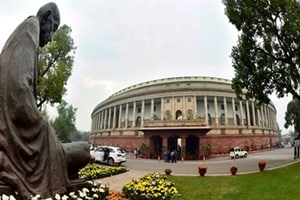
 D Tripati Rao, professor of Economics, IIM Lucknow, talks to Surbhi Gloria Singh about expectations from the upcoming Union Budget.
D Tripati Rao, professor of Economics, IIM Lucknow, talks to Surbhi Gloria Singh about expectations from the upcoming Union Budget.
What should the Union Budget FY17 focus on
This is not the time to reduce fiscal deficit. It’s the time to analyse how well we are mobilising fiscal resources in reinvigorating domestic macro economy, both through consumption demand and investment. Finance minister Arun Jaitley’s focus should be broadly on private investments. Going forward, the manufacturing sector, especially the cyclic growth sector, has to be focused upon for domestic demand.
Policies for IITs, IIMs and higher education institutes
Higher educational institutes, including IITs and IIMs, have an important role to play not only in imparting appropriate training and skills to the youth, but also for nation-building. So, in the Budget, a lot more emphasis needs to be provided to such institutes.
Areas needing government’s focus for increasing growth
The government is carrying out a lot of supply-side structural reforms, which include ease of doing business, bringing credibility and operational efficiency. But their effect will be felt only after 2-5 years. The good news is that household global economy is showing signs of recovery.
On RBI Governor Raghuram Rajan’s performance
Rajan is a strong monetarist and an aggressive central banker. If you compare when he took charge of governorship to now, I think we have succeeded in lessening foreign exchange volatility, given the on and off reeling global economic scenario. Under him, RBI has succeeded in containing exchange rate volatility, breaking cost-push inflation scenario with strong aggressive monetary policy, not succumbing to the popular demand of decreasing interest rate too quickly, and keeping a watchful eye on Fed’s policies and the European financial market.
On the economic policies that are lacking in India
Expenditure on food subsidy and fertilisers is growing, rather than decreasing. Structural reforms need to be all-inclusive. For that, harsh decisions have to be made. We have so far carried out first-generation and second-generation reforms. For third-generation reforms, policy-making has to evolve with the changing economic and social structure. We have to focus on minimal expenditure, maximum effect.
On leveraging the country’s demographic dividend
We’ve to enable the environment from the supply-side point of view; create a vibrant manufacturing sector that will absorb the increasing labour force.
On the world heading for a 2008-like financial crisis
2008 was more about asset-price. Today, the economy is facing supply-crisis. The group of countries that will be affected in the current crisis is different. Oil-exporting economies to primary exporter economies will be affected today. The 2008 crisis was about too much price; the current crisis is more about production viability.
On the reforms needed to boost overall growth
India has grown both quantitatively and qualitatively in this millennium. But though the economy has become more resilient to external shocks, the competitiveness of Indian industries is still not up to the mark. To make an impact as a major driver of global growth, we need to work on structural reforms. The ship turnover time in Singapore is almost ten times less than in India. That’s the level of difference we need to catch up with. In addition, R&D expenditure of Indian firms is still low. Long-term growth needs in-house innovation rather than borrowing technology. If Make-in-India can bring that change, we will see double-digit growth soon.


